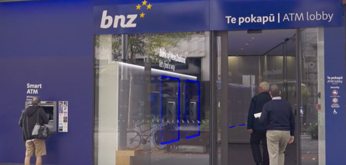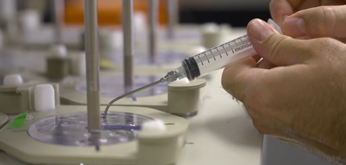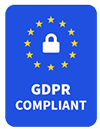27 September 2024 |
.png?width=744&height=372&name=From%20reactive%20to%20proactive%20(1).png)
When Kiwis talk about “number 8 wire,” we’re often referencing the legendary Kiwi ingenuity that supposedly makes us masters of DIY. This national obsession with the humble piece of wire has long defined our classic “do it yourself” culture.
You’ve probably heard the phrase “she’ll be right,” but did you know that, in terms of work health and safety, “she” won’t be right?
As of 2023, according to the Business Leaders Health and Safety Forum report State of a Thriving Nation, workplace deaths and injuries in New Zealand cost the economy about $4.9 billion annually, with an average of 73 people killed in work-related accidents each year.
While it's easy to blame number 8 wire culture for these issues, that’s an oversimplified explanation. The reality of the problem is far more complex.
Let's Dig a Bit Deeper…
At ecoPortal’s inaugural conference, ePIC, we had the privilege of hearing from Francois Barton, CEO of the Business Leaders Health and Safety Forum. His powerful presentation “Understanding to Translation: What needs to happen to ensure a thriving New Zealand?” was an eye-opening dive into the Forum’s findings on workplace safety and subsequent actions.
Francois didn’t mince words: the 2023 State of a Thriving Nation report revealed the disturbing extent of New Zealand’s safety progress, or lack thereof. Their findings disclose that our workplace fatalities are 60% higher than Australia’s.
In response, Francios and his team formed an independent task force aiming to provide a comprehensive view of New Zealand’s health and safety performance and explore where exactly we’re going wrong.
Independent Task Force? Why Does That Ring a Bell?
If this thought crossed your mind, you’re not alone—in fact this is not the first independent task force created to focus on workplace health and safety.
In 2010, the Pike River Mine Disaster delivered a wake-up call that reverberated across the nation and shook New Zealanders to their core. How could such a preventable tragedy occur in our backyard?
In response, an independent task force on workplace health and safety was created in 2013. Their findings highlighted that New Zealand’s workplace health and safety system was failing, leading to the Health and Safety Act reform of 2015. This overhaul aimed to transform our approach to workplace safety and prevent tragedies like Pike River Mine from happening again.
Armed with new insights and legislation, one would expect New Zealand to have made strides; yet here we are in 2024, with no real progress to show for it.
This stagnation inspired “Been There, Done That”—the Forum task force’s 2024 report, which highlighted that it’s the exact same barriers that repeatedly hinder our progress. It’s a stark reminder that while we’ve identified the necessary changes, we’ve repeatedly failed to implement them, and it's high time we tackle them head-on.
Been There, Done That: the three key barriers
Let’s jump in, shall we? The three key barriers outlined by the task force in “Been There, Done That,” are as follows:
1. Lack of alignment and coordination
Imagine a symphony orchestra where each section is playing a different piece of music. That’s a bit like how New Zealand’s health and safety framework operates right now. The issue isn’t a lack of effort; it’s more about how different parts of the system are failing to work together.
In New Zealand, various government agencies have distinct and crucial roles in health and safety. The Ministry of Business, Worksafe, and ACC each have their own mandates—be it regulation, enforcement, or compensation. The problem is that no one has put effort into aligning these functions. This isn’t about pointing fingers; it's about recognising that there’s no one at the helm to ensure these agencies are moving in the same direction.
2. Lack of regulatory clarity
If you're a business owner trying to navigate the health and safety regulations in New Zealand, you might feel like you’re chasing shadows. One of the biggest hurdles isn’t the amount of regulations, but rather the lack of clear guidance on what’s expected.
In his presentation, Francois stated that of all the CEOs, directors, and experts they spoke to, the Health and Safety at Work Act was not identified as the problem; instead, it's a lack of clarity over where to start and stop.
3. Lack of ownership and confused incentives
Believe it or not, New Zealand does have a Health and Safety at Work strategy, but it's often unclear who is actually responsible for steering it. Unlike in Australia or the UK, where strategies come with clear targets and accountability, New Zealand’s approach seems murky.
The incentives and sanctions for health and safety performance are often inconsistent and confusing. Businesses are left uncertain about the rewards for good practices and the penalties for lapses. This inconsistent messaging only adds to the confusion, making it harder for businesses to be sure in their responsibilities.
What Did Our People Have To Say?
During his presentation, Francois threw out a couple of big questions to our health and safety pros, and the responses were telling. Very quickly it became apparent that many organisations across New Zealand are grappling with the same issues, showing just how widespread and interconnected these challenges are across the industry.
Here’s a look at some at what they had to say:
What’s the number one thing you would want to change about Health and Safety in NZ?
1. Where are the big fines? People are eager to see hefty fines handed down to companies that have the resources to do the right thing but choose not to. It’s time for real consequences for those who aren’t taking their responsibilities seriously.
2. Can we remove ambiguity? There’s a strong call for clearer, up-to-date guidance. Less ambiguity and more precise structures would help everyone understand exactly what’s required.
3. What about standards and codes? There’s a need for clearer standards and a more accessible body of knowledge. A website with practical advice could be a great method to provide a platform that everyone can access.
4. How can we support smaller businesses and contractors? Small businesses and independent contractors without the resources to access a health and safety provider need some kind of support. Shifting from a fear-based approach to a learning-focused one could really make a difference in these sectors.
How would you implement these changes?
1. Make standards more visible. Accessing the standards needs to be easy and quick so businesses know what is required from them to help them support a safe work culture within their organisation.
2. Improve communication. Better communication across government bodies and stronger regulations could be game changers. Looking at successful models from Australia might give us some insight into what we are missing.
3. Get everyone involved. Engaging employee focus groups, unions, and industry groups could provide an array of perspectives and drive real change.
4. Hold government bodies accountable. Ensuring that MBIE, WorkSafe, ACC, and the Minister are held accountable for their roles and performance is crucial to making sure the system is held to a high standard and works effectively.
5. Boost leadership for regulators. A leadership program for regulators could significantly enhance the effectiveness and efficiency of the system.
Final Words
While it’s tempting to blame New Zealand’s workplace safety issues on the “number 8 wire” mentality, it’s clear that's just not the whole story.
The 2024 “Been There, Done That” report has revealed that the core of this problem is so much more complicated and that this excuse is no longer acceptable.
Instead of pointing fingers at our DIY culture, it’s time to get down to business. We need to push our leaders to get our safety systems in sync, make the regulations clearer, and ensure everyone knows their role and what’s at stake.
By tackling these challenges head-on and moving past the quick fixes, we can make real strides towards a safer workplace. Let’s band together and collaborate so we can finally see some genuine improvement and create a safer New Zealand.
Because in the end, everyone deserves to get home safe.







